Go&See
The Matera EuropeanCapital of Culture 2019 candidature bid book foresees a number of projects that are to be carried out by the Matera - Basilicata 2019 Foundationin co-creation with the Lucanian creative scene.
Casa Netural is one of the 31 Lucanian creative realities chosen as Project Leaders to design and develop the bid book projects together with the Foundation, and more specifically is working on the co-creation of a project regarding food within the Roots and routes theme of the bid book.
Among the various tools foreseen in the co-creation process (meetings, workshops, mentoring), we have the "go&see": a voucher to go to Europe, in search of encounters and sources of inspiration; to forge new relationships and partnerships.
We at Casa Neturalhad our first "go&see" in Ganges, in southern France, to meet John Thackara, our European project partner. Part of the IdLab team was also with us, project partner in charge of the communication and digital aspects. It was a meeting of discovery and knowledge.
Discovery of a territory that has many affinities with Matera, and in general, with Lucania; knowledge of the many projects that, at European level, are designing new models of community and local development by enabling forms of circular economy.
Projects in line with the goal that Casa Netural has set for 2019: to use food, a catalyst of cultural identities, to build relationships of proximity between peripheral territories seeking new forms of sustainable development.
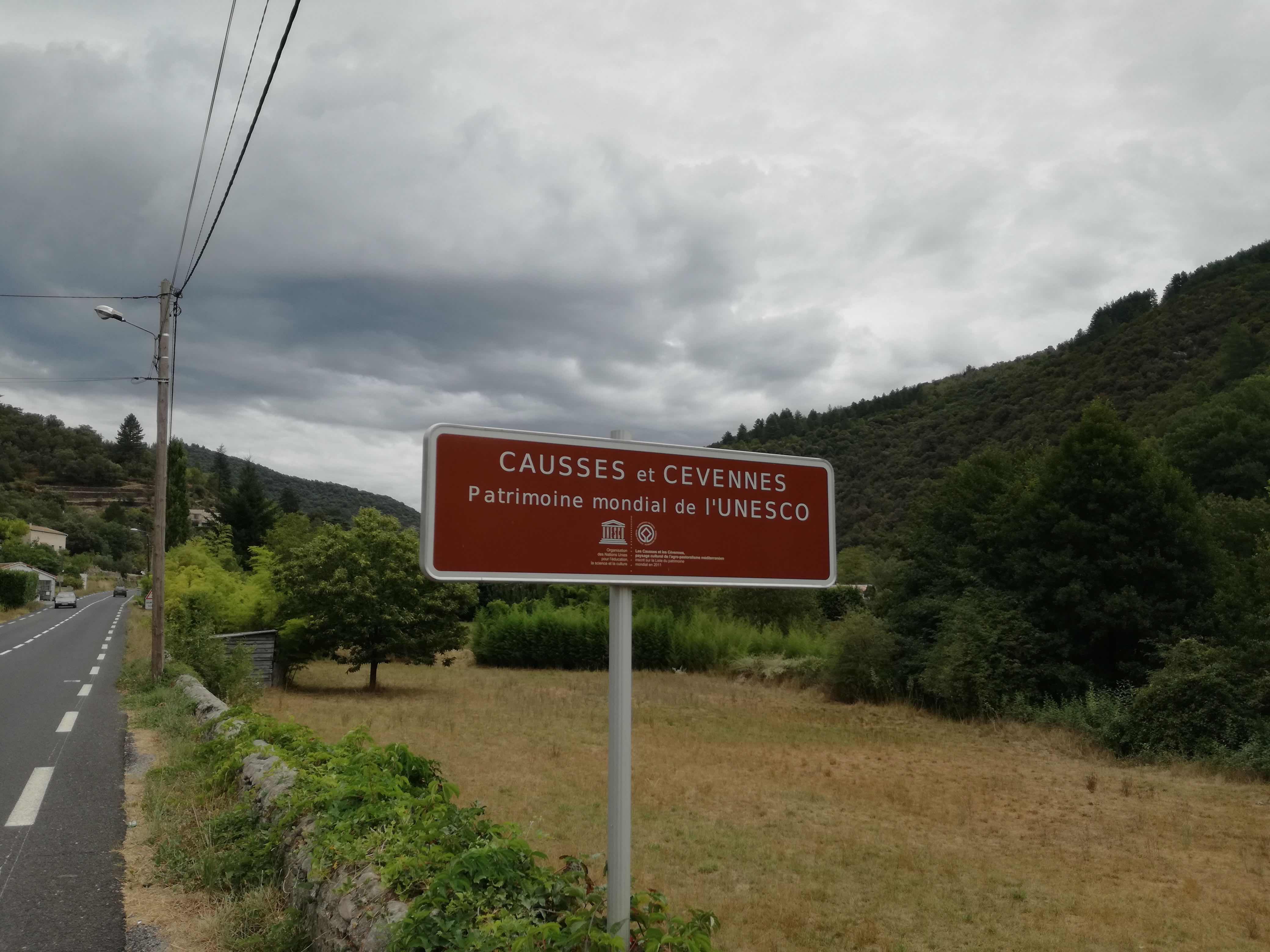
Ganges is the "South Gate" of the Causses and Cévennes territory, inscribed in the Unesco World Heritage list in 2011 as a Mediterranean agro-pastoral Cultural Landscape.
There are many affinities with Basilicata: from the geological diversity of the landscapes, to still being a testament of an “ancient” world closely linked to agricultural and pastoral traditions.
In this vast territory we find the last places where they still practice the traditional summer transhumance, a seasonal droving between pastures.
A territory which, like Matera, but, in general, Basilicata, can count on a vast landscape, natural and cultural heritage to be valued, developed, and at the same time preserved.
Beautiful places, rich in history and traditions, which invest on their heritage to no longer be "economic peripheries" but "European economic provinces": places where you can live, produce and make economy, without traumas, and preserving quality of life.
If Ganges was the door to discover a territory so akin to Basilicata, John Thackara was our bridge to meet those who, in those places, organize from the bottom up, to carry out community projects able to draw a sustainable economic development in the region.
John Thackara, English philosopher and journalist, has been living in Ganges for several years.
He was the founder of "Doors of Perception", a programme of conferences where, for the first time, a connection was created between the world of design and the environmental movement. John Thackara continues to work on his research and writing with the objective of deepening this relationship, to find new solutions for sustainable development. He is working to foment visibility and networking of all the organizations experimenting with this type of solutions.
John thus introduced us to this world, telling us several stories and describing realities.
We met and got to know Kristi van Riet, Co-Director of Doors of Perception, who shares not only a life with John, but also research work on these issues.
One afternoon during our stay was dedicated to meeting with Elise Boissiere.
Elise lives in a beautiful stone house, in the Cévennes National Park, which has belonged to her family for generations.
Web designer by training, she chose to live in her region of origin and to apply her experience and work to the service of a new development of this area, which, like Basilicata, registers a strong risk of desertification. She is working on networking all the local realities and expertise to design and implement a form of light and environmentally friendly tourism, source of economic sustainability for all affected areas, while preserving environmental and ecological sustainability.
More specifically, Elise works within the municipal administration of Vallerauge and manages two projects in particular: the Meteosite du Mont Aigoual, and Les Ecovoisins for Cévennes Ecotourisme.
The Meteosite, museum and interpretation centre dedicated to meteorology, is the last mountain observatory in France and one of the last in the world.
Les écovoisins is a project to build mini-réseaux of tourist, cultural and economic actors who work together to develop tourist practices based on the values of sharing and respect for the environment and to enable a reflection on possible forms of economic development in a rural area.
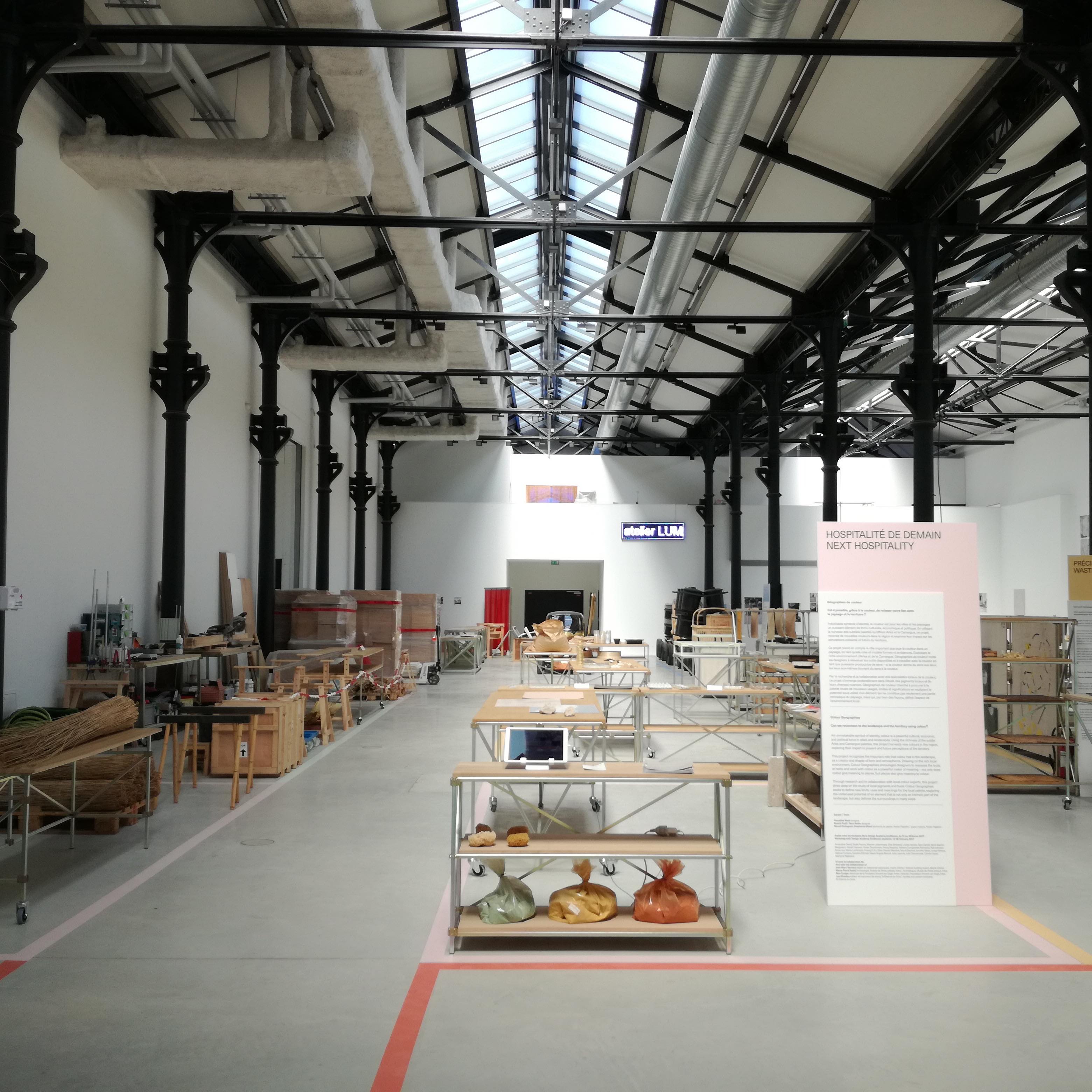
Lastly, we collected the testimonies of other "non-French" individuals, who like John and Kristi, live in one of the small towns in this region, bringing content and a European scope into small almostrural realities, chosen for the quality of life they offer:
Walter Tjantele– photographer and cycle tourism expert
Valerie Katz – chef, hotel manager, and wellness tourism expert
Walter and Valerie, in addition to pursuing their professions, own a large and historical house near Ganges, in which they combine tourist and artistic initiatives. In this way, they have made their Maison du Pont Vieux into a point of reference and of building proximity relationships at local and European level.
Our "go&see" in southern France ended with a bang, with a visit to Arles and Luma Arles.
Luma Arles was launched in 2013 by Maja Hoffmann – president and founder, in 2004, of the Luma Foundation – to design, develop and manage the "Parc des Ateliers", a large industrial area which has been converted into a cultural institution that hosts the various activities of the Luma Foundation.
What really impacted us is that Luma Arles aims to be an ecosystem where culture and the environment are interconnected in research and in the activation of a circular economy that starts from the use of local natural resources to return to the territory.
In its programming Luma Arles has implemented the "Cuisine des Forges" project, motivated by the belief that cooking is a universal way of sharing and promoting interpersonal and cross-cultural exchange.
We also visited there, with great interest, the Atelier Luma; the exhibition dedicated to the photographic archives of Annie Leibovitz: "Annie Leibovitz The Early Years: 1970-1983. Archive Project #1"; "The Visible World" an installation created by Peter Fischli and David Weiss.
To conclude, a long journey home which, between bad weather, delays and a long wait at the airport, got us home at 3 o’clock in the morning.
We were undoubtedly tired upon our return but completely satisfied with the experience.
Besides the beauty of the places we visited and the intensity of the meetings, we brought home living testimony of "peripheral" areas which, thanks to projects and communities built around the development of natural and cultural heritage are claiming European citizenship anew.
At the end of this journey in the towns of the French Loire Valley between Nantes and Angers we will return to Basilicata bringing a precious commodity:
art in public space, the role of the artist in a world of active and sentient citizens, des rêves sauvages (wild dreams), the actual "cultural landscape" of people and places, of a widely-looking grey city (Nantes) with an economy made of industrial activities ranging from metallurgical to shipyards, rediscovered as European green capital, symbol of bien vivre, of the ugly turned beautiful because it is finally made visible, understood, valued, politically imagined, loved… and above all "recognized" as a common good.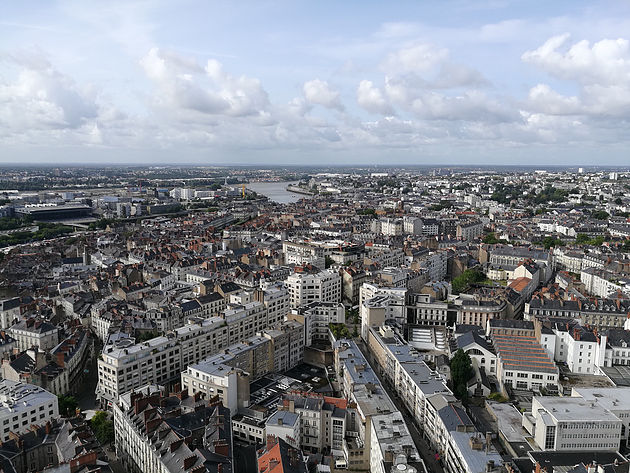
Nantes, city of Jules Verne, whose Museum watches from above the Loire River as it penetrates the city, and draws the "Ilê de Nantes" river island-in the past no man's land-former railway area dotted with warehouses for the shipyards, reborn thanks to urban redevelopment and which has become: industrial heritage, landscape of contemporary architectural experimentation, unusual space that houses the fantastic machines (mechanical 20-metre-tall elephants, large spiders and rides inspired by Da Vinci), lunar landscapes on which to jump, Cranes repainted and lit up like spaceships, small beaches equipped for barbecues by the river, vast urban vegetable gardens, art galleries, extravagant venues, schools, nurseries, green spaces, socio-cultural centres, and many people, of all ages.
A city that from the 15th to the 19th century was the first point of entrance for slaves destined for France and many other European cities of that era, and that speaks of its past through the "Memorial de l'abolition de l'esclavage", an underground walk along a corridor made of concrete and glass: we find that the names of the ships that transported hundreds upon hundreds of slaves were inspired by friendship, beauty and the Saints: L’Amitié, la Belle Marie, le Saint Paul.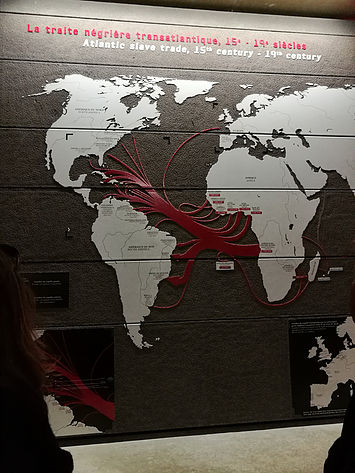
Literally every single part has been thought to welcome the presence of children and all play areas represent great opportunity to express art, curiosity and beauty. Near the Place Mercoeuris a big wooden sea monster, freed from deep sands as told by the author, artist and architect Kinya Maruyama, that puffs steam, offers gymkhanas through its belly, slides along its tongue and "waters" its back decorated with hanging plants. In addition to fountains/pools, Paysage Glissé (slipped landscapes) around the castle of the Dukes of Brittany and numerous artistic interventions of large dimensions that stimulate the city, its residents and visitors.
In the city you just have to simply follow the now famous "LigneVert", the green line drawn on the asphalt along the pavements, pedestrian bridges, iron railings to follow the 52 stages of this year. Every year since 2012 summer in the city is enriched with new visions while keeping past ones alive, including everything up to the delicious Talensac market which displays the art of presenting food.
It is impossible to summarize this trip. We will cite only three works, the ones that impacted us the most, as it is worth considering their meaning.
Mon nom est personne (translator’s note: my name is nobody), exhibition by Alexandre Périgot, a total artist in his use of languages that infiltrates the saturated network of entertainment and art images shaking this mechanism at a standstill by proposing Les anonymes. All museums have a part of anonymous works among their collections. These unsigned works authorize us to tell of various scenarios. An opportunity to look at a work produced between the 17th and 20th centuries, without the presence of the artist, free from panels, signatures, fame and explanations. Man and his vision of the work, a simple and shocking exercise through which we feel the "weight" of a spoiled look.
Entrez Libre by Pick Up production.
A historic jail in Nantes that will be demolished soon. Its external and internal walls portray the mural art of a collective of artists that have given voice to the excruciating suffering of its inhabitants over the years. "To provoke the inner traveller, an invitation to cross the prison bars, its madness, live its saturation". An ephemeral work of dreamlike evasion and magnificent escape.
BLKNTRNTL by Nicolas Darrot.
The Graslin Opera Theatre in Nantes has an immense mechanized black cloth flying slowly on stage. A work designed to connect the outside with the inside. When we discovered it, it was in the foyer of the theatre between the statues of Graslin and Moliére. The code is that of International Black, the first group of anarchists in London at the end of the 19th century. Seen in this way, this approximately 10 metres long flagpole, rhythmically shaken by a mechanism looks mean and vindictive. In the artist’s vision it is the extension of the conductor's baton, and the 45° inclined drape is agitated by simulating the sound of time and reflects the city’s silhouette on the glossy surface. Hypnotic, for us a representation of the ghost of the theatre, dead and buried.
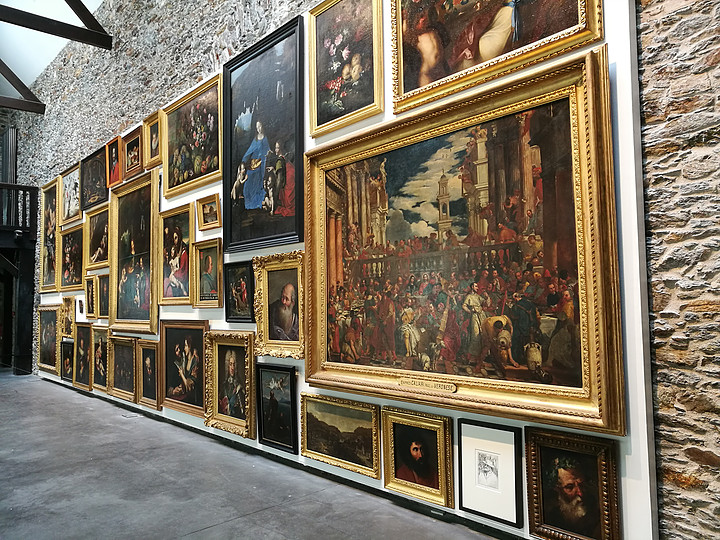
Impossible not to mention Le Lieu Unique, former biscuit factory of le LU (the small butter biscuits more specifically). It is the current benchmark for the contemporary scene of many performative languages, with a brasserie, a library and a hammam downstairs.
All this and much more (the Art Museum, Le Jardin des Plantes, La Tour de Bretagne and the immense stork of Le Nid by Jean Jullien, the Art Nouveau brasserie La Cigale, unchanged since 1845) is Le Voyage a Nantes the public company that has joined the institutions and artistic sites representative of the Ville de Nantes and Nantes Métropole, a cluster of 24 municipalities with a total of 600,000 people that gathers the whole population of the agricultural areas and urbanized areas of the Loire, and which in 20 years has increased the number of residents by 100,000 and expects the same growth until 2030.
A fabulous trip along the 70-km river estuary ensures the discovery of landscapes and collections of contemporary works of art perfectly integrated with the natural resources along the route. Voyage a Nantes is one of the last projects, perhaps the culmination, of a socialist political vision which has used art and culture as a political weapon against their opponents, conceived and designed by current artistic director Jean Blaise, and the current Minister of Foreign Affairs Jean-Marc Ayrault, Prime Minister from 2012 to 2014 and beforehand president of Nantes Métropole.
Nantes is also the city where the Royal de Luxe theatre company is located, in two huge harbour hangars ceded by the city, at 1, Quai Cordon Bleu street.
The artistic director is Jean Luc Colcourt, who in 1996 received the Grand Prix National du Théâtre, the very same received by Ionesco, Beckett, Barroult, Mnouchkine and Anouilh to name a few. To penetrate the fortress means crossing a shipyard to discover the head of a life-size rocket that just came out of a Verne novel, climb several stairs which walls speak of decades of work and of a trip around the world of their productions.
Before meeting the Executive Director GweanelleRaux, with whom all previous contact had been by mail and by phone, I am taken to the "Museum" as they call it. We usually call where all the props are locateddeposits, but theirs are truly special. Indeed,MessieurColcourt had a poetic intuition in 1993, and dropped a giant from the sky. Yes, a giant, a being of wood, machines and cloth wearing a diving suit. It is 15 metres tall and in the costume room I find myself in front of its actual coat. It is hanging on a hanger and starts from the top of the warehouse.
In the dim light I see the feet of the little giant, its niece, and suddenly I cross its eyes, its head is packaged and it looks at me.
Therein lies a life of visions born in principle from Jean Luc Colcourt and Didier Gallot-Lavallée (already starring our first go&seein Rome).
In the days spent in Nantes, after seeing the new show "Les miniatures" twice and having met GwenaelleRaux, the desire to develop the project for which we were selected by the Matera 2019 Foundation grew more and more. To have the possibility of dealing with extraordinary characters means bringing to Potenza and Matera and all of Basilicata giants falling from the sky that tell extraordinary stories of simplicity and poetry made for everyone.
One of the most memorable performances in Liverpool succeeded in attracting 3.5 million viewers.
Colcourt from the beginning chose street theatre because he believed it to be the best way to approach people, subvert reality and inject irony and poetry into the streets, places often neglected or lived daily absent-mindedly. All done following two golden rules: the shows take place outdoors, and are free of charge.
We hope to speak to you about the developments of this dialogue. In the meantime we are preparing for our September-October go&see where we will see giants falling from the Geneva skies.
This trip has allowed us to experience places overturned by cultural operation, a non-invasive artistic dimension in the promotion of events, short and quickly moving queues, a solution that allows us to appreciate the city in a short period of time, to feel it regenerated, from the looks and presence of tourists who really become at this time “cultural residents”, with a European spirit that goes beyond characteristics and "nationalities".
We conclude by saying that without a real political vision no town of Basilicata may really benefit from the arrival of money, relationships, and great artists that Matera2019 will be able to attract.
It is necessary to try to love this land politically, and when we say politically we are addressing administrators and citizens.
To those who open businesses, those who volunteer, to artists, to Mayors and councillors.
Basilicata has an inexhaustible heritage of the past and present, expresses a contemporary soul while remaining deeply rooted to its original characteristics. It is a good thing to finally become politically aware of this. And if the electorate may have to spur our administrators, be aware that ART has an extraordinary power, far more than favouritisms and short-term relations. ART, understood as in all its expressive languages, connects people with each other, improves life, gives hope for the future to the young people of this land. Invest in art not only in oil, wind, and everything else that seems to have a priority, sooner or later everything will dry up, with the exception of man’s imagination.
The first step has been taken. A very quick Roman go&see, with the fear of going mad because of 42°C temperature, and literally going crazy with Emmanuel and Didier Gallot-Lavallée(the theatre equivalent to the Lumière brothers), but let’s go in order.
Towards the end of April the Matera Basilicata 2019 Foundation, in order to accomplish the cultural programme that determined the selection of Matera, posted a call to select suitable "project leaders" to develop the contents of the bid book.
Our company was selected along with 31 organisations dealing in various ways of dissemination and cultural production.
We await between October and November a further selection based on the quality and cohesion of the executive project, result of the co-production carried out in July and September with the team of the Foundation including cultural manager Ariane Bieou, Agostino Riitanoand Ida Leone.
One of the first actions proposed by the Foundation was exactly this go&see: a voucher to fund travel and explorations to meet the project partners, nourish ourselves on experiences, visions, festivals; anything that can help the candidature project to find the maximum expressive strength in artistic and organizational terms.
Our company responded to the Circulating Entities project within the Roots and routes theme.
We intend to apply our maximum efforts and strengths over the next few years to turn what we have learned about Basilicata into a spectacular poetic tale, leaving a lasting impression in the places from which it originates and in which it arrives.
To start building this route and identify a "great and powerful narrative" we returned to our roots as actors with Emmanuel Gallot-Lavallée our art source and life coach. A "non-master" more precisely that in 2005 resulted in the artistic association between myself and Mimmo Conte, Gommalacca Theatre.
And in the vitality of this process we sought the extraordinary vision of his brother, Didier, co-founder of the Royal-de-Luxe company in Nantes.
Two brothers, inventors of epic narratives, of Giants covered up in sand, of hanging gardens, flags for the windy city, mechanical costumes, headdresses and masks of the subsoil with which, yesterday in a little bar in Happio, between the coloured snails that climb the grey walls of the shopping centre in the Appia we have "upturned the earth", to bring out the underground sounds of a Basilicata made of ash men who have lost their memory, angels and buildings that weep tears of colour.
Emmanuel and Didier, welcome to our dreams, 2019 will be a heavenly year.





